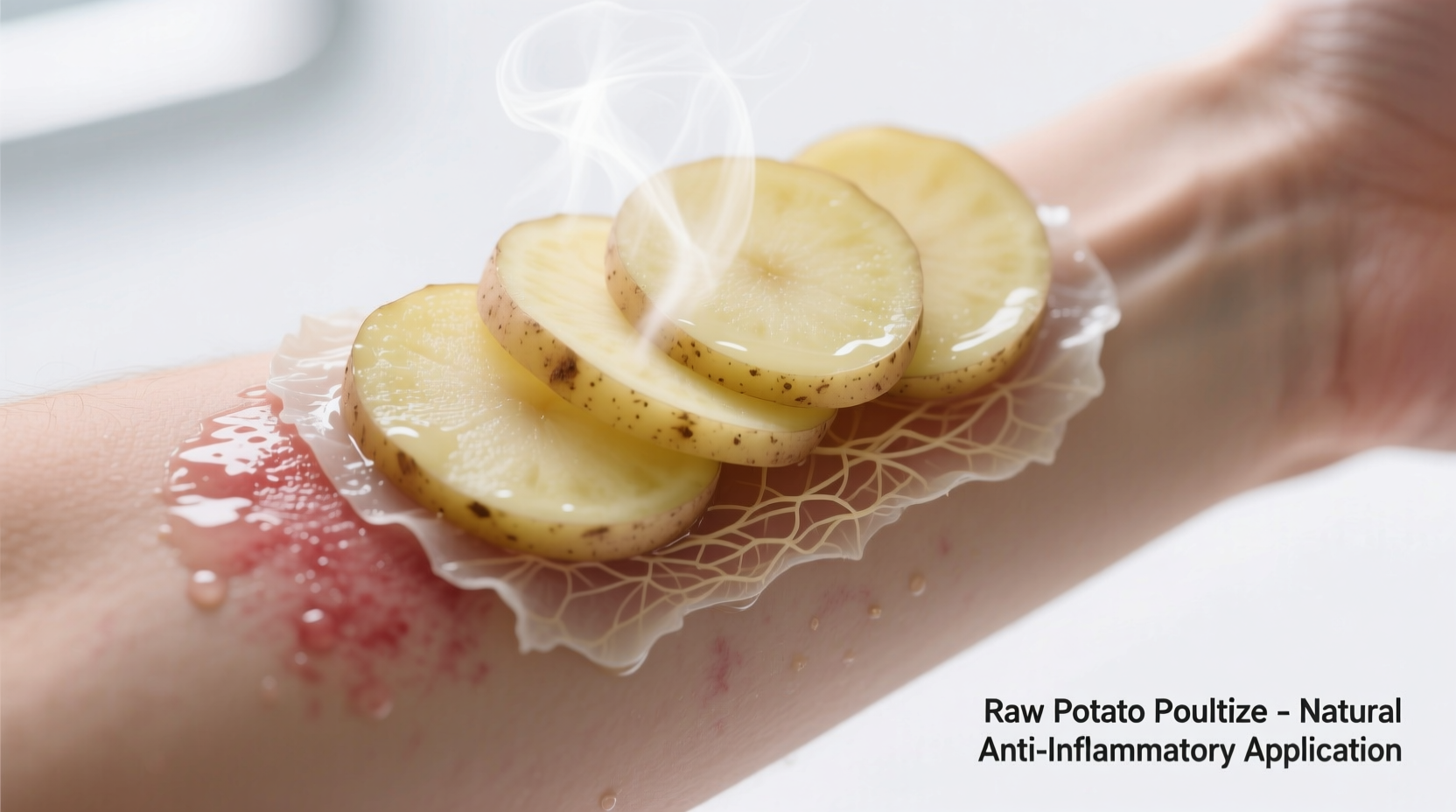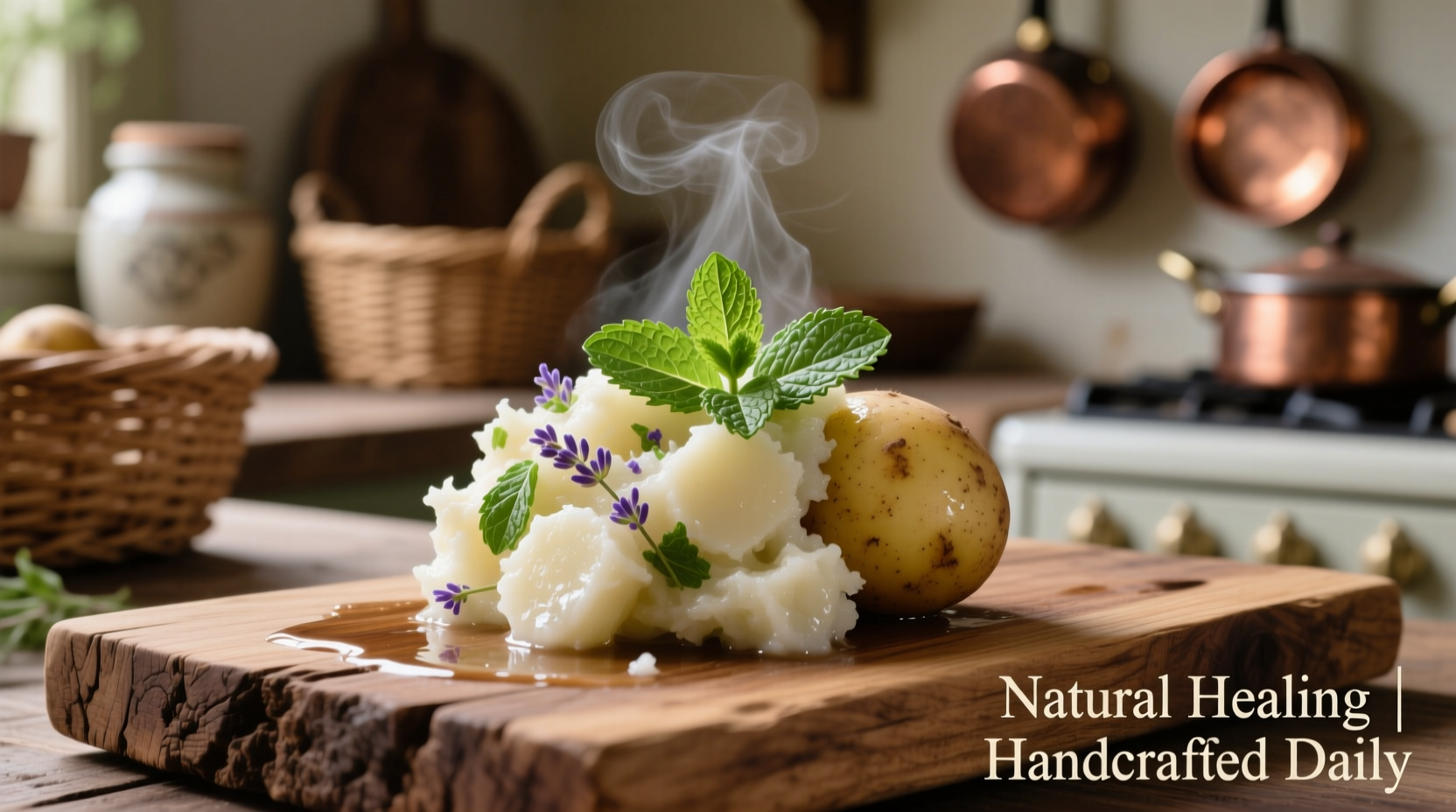Raw potato poultices can provide temporary relief for minor skin irritations, inflammation, and superficial wounds due to their natural starch content and mild anti-inflammatory properties. However, they are not a substitute for professional medical treatment for serious conditions, infections, or deep wounds. Scientific evidence supporting their effectiveness is limited to anecdotal reports and historical usage, with minimal clinical studies validating therapeutic claims.
Understanding Potato Poultices: Science Meets Tradition
For centuries, home healers have turned to potato poultices as a natural remedy for various skin conditions. While modern medicine offers more reliable treatments, understanding when and how this traditional remedy might provide temporary relief remains valuable knowledge for household first aid.
What Exactly Is a Potato Poultice?
A potato poultice is a simple preparation made from raw potatoes applied directly to the skin to address minor irritations. Unlike modern topical medications, this traditional remedy relies on the natural compounds found in potatoes to potentially soothe discomfort.
The practice dates back to 19th century European folk medicine, where potatoes were readily available and used for various household remedies. Historical medical texts like The Domestic Medicine (1839) documented potato applications for skin inflammations, though without scientific validation of their effectiveness.
| Historical Period | Documented Uses | Preparation Methods |
|---|---|---|
| Early 1800s | Skin inflammations, minor burns | Raw grated potatoes applied directly |
| Late 1800s | Boils, splinters, insect bites | Mashed cooked potatoes with added herbs |
| Early 1900s | Rheumatic pain, sore muscles | Raw potato slices with vinegar or oil |
| Modern Era | Minor skin irritations (limited use) | Raw grated potatoes in cloth wrap |
The Science Behind Potato Poultices
Potatoes contain several compounds that may contribute to their traditional use as a poultice:
- Starch - Creates a protective barrier and may help absorb minor impurities
- Catecholase enzymes - May have mild anti-inflammatory properties
- Potassium - Could potentially help reduce swelling
- Vitamin C - Supports skin health in small amounts
According to research published in the National Center for Biotechnology Information, raw potato extracts demonstrate some antioxidant activity, though the clinical significance for topical application remains unclear. The physical properties of the poultice—its cool temperature and moisture content—may provide temporary soothing effects similar to a cold compress.

When Potato Poultices Might Provide Relief
Potato poultices may offer temporary comfort for:
- Minor first-degree burns (after initial cooling with water)
- Superficial skin irritations from plants like poison ivy
- Small insect bites and stings
- Mild swelling from minor injuries
- Superficial splinters (to help draw out)
It's crucial to understand the limitations. A study in the American Academy of Dermatology Journal notes that while some home remedies provide temporary comfort, they don't address underlying causes of skin conditions and shouldn't replace professional medical care when needed.
How to Make and Apply a Potato Poultice Safely
Follow these steps for safe preparation and application:
- Choose the right potatoes: Select fresh, firm potatoes without green spots or sprouts
- Prepare properly: Wash thoroughly, peel, and grate or finely chop
- Application method: Place grated potato on clean cloth, fold to contain, and apply to affected area
- Duration: Leave in place for 15-20 minutes, no longer than 30 minutes
- Clean up: Remove and gently cleanse skin with mild soap and water
Never apply potato poultices to broken skin, deep wounds, or infected areas. Always wash hands before and after application to prevent introducing bacteria.
Important Safety Considerations and Limitations
Understanding when not to use a potato poultice is as important as knowing how to make one. Consider these critical boundaries:
| Suitable For | Not Recommended For | When to Seek Medical Help |
|---|---|---|
| Minor skin irritations | Open wounds or cuts | Signs of infection (increased redness, warmth, pus) |
| First-degree burns | Second or third-degree burns | Burns covering more than 2-3 inches |
| Superficial splinters | Deeply embedded objects | Splinters near eyes or in sensitive areas |
| Mild insect bites | Known allergic reactions | Severe swelling or difficulty breathing |
People with diabetes, compromised immune systems, or circulatory problems should avoid home remedies like potato poultices without consulting a healthcare provider first. The Centers for Disease Control and Prevention specifically warns that individuals with diabetes need professional evaluation for even minor skin issues due to increased infection risk.
Potato Poultice vs. Other Home Remedies
How does a potato poultice compare to other common home remedies for similar conditions?
- Aloe vera: Better documented for sunburn relief with more scientific backing
- Honey: Has proven antimicrobial properties for minor wounds
- Cold compress: More effective for reducing swelling and inflammation
- Oatmeal baths: Better for widespread skin irritation like chickenpox
While potato poultices have historical use, modern alternatives often provide more reliable results with better scientific support. The temporary soothing effect may come primarily from the cool temperature rather than specific potato compounds.
When to Choose Professional Medical Care
Recognizing when home remedies are insufficient is critical for your health and safety. Seek medical attention if:
- Symptoms persist beyond 24-48 hours
- Redness, swelling, or pain increases
- You develop fever or chills
- The affected area shows signs of infection
- You have underlying health conditions like diabetes
Modern medicine offers treatments with proven efficacy for conditions where potato poultices might provide only temporary, superficial relief. Don't delay professional care for potentially serious conditions.
Practical Takeaways for Safe Home Care
While potato poultices represent an interesting piece of folk medicine history, approach them with realistic expectations:
- Consider them a temporary comfort measure, not a treatment
- Always clean skin properly before and after application
- Never use on broken skin or serious injuries
- Monitor for any adverse reactions
- Have evidence-based treatments available as alternatives
For minor skin concerns, over-the-counter hydrocortisone cream or antihistamines often provide more reliable relief than traditional remedies like potato poultices. Keep your home first aid kit stocked with medically approved treatments for common issues.











 浙公网安备
33010002000092号
浙公网安备
33010002000092号 浙B2-20120091-4
浙B2-20120091-4